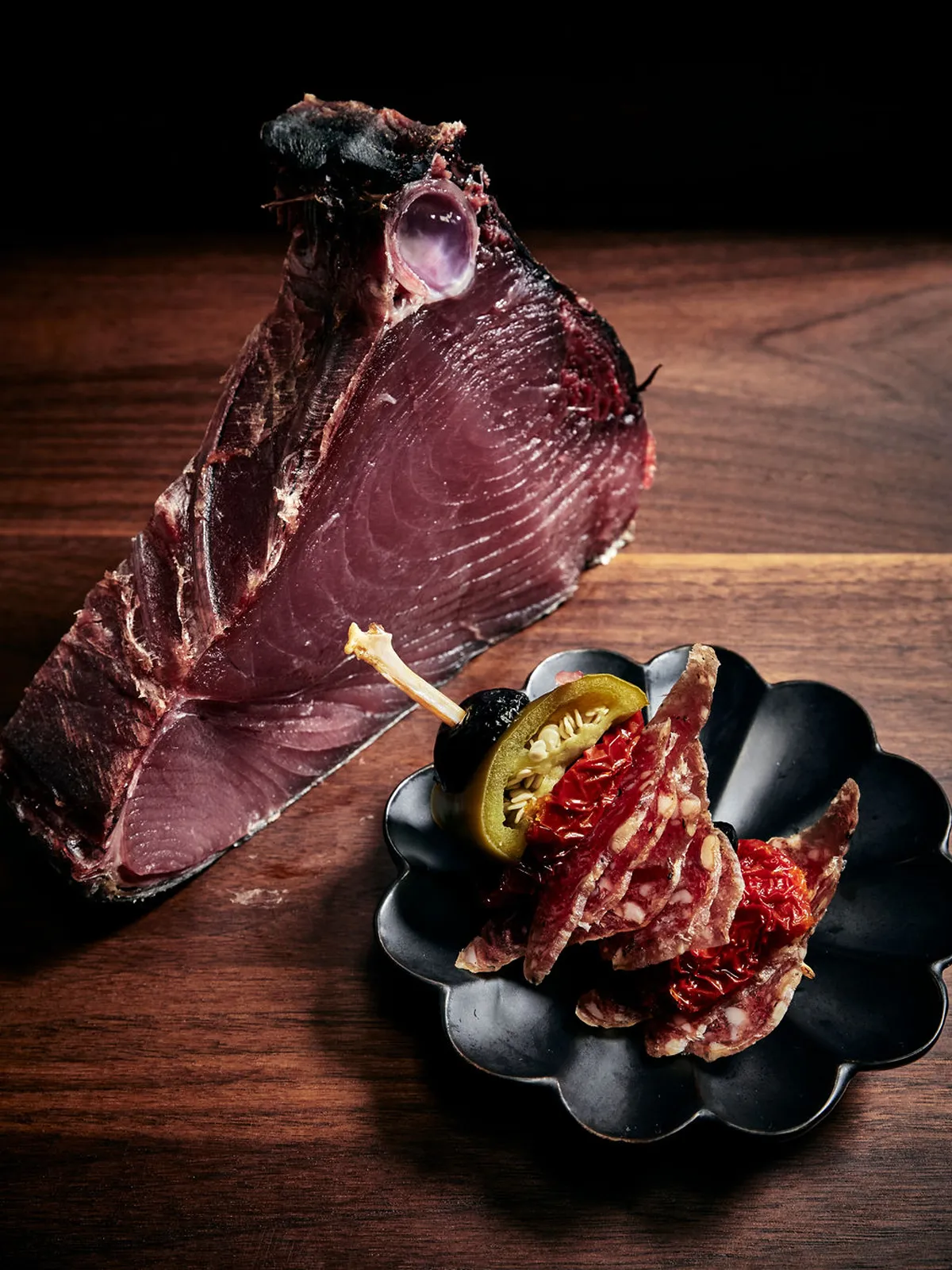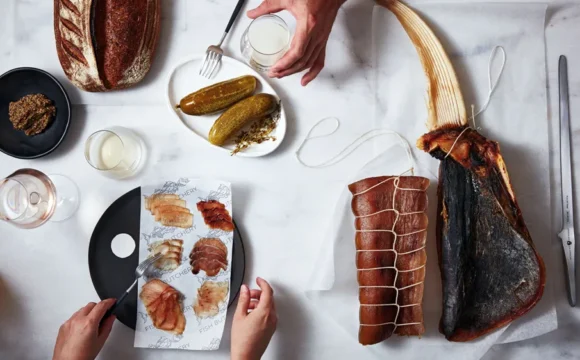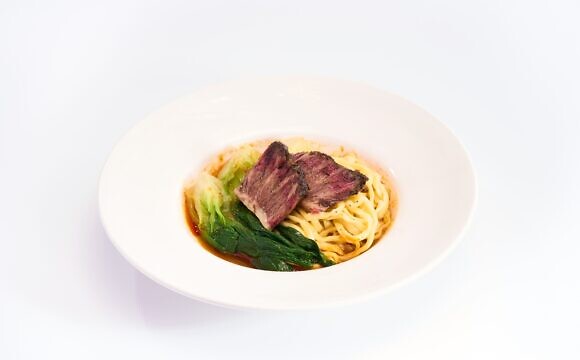การเดินทางของ Josh Niland สู่โลกของปลาแห้ง เริ่มต้นจากความผิดพลาดในช่วงวัยเยาว์ สมัยที่เขาเป็นพ่อครัว line cook) ที่ร้าน Fish Face ในซิดนีย์
ครั้งนั้น ด้วยความลืม Niland ไม่ได้ย้ายเนื้อปลากะพงที่ยังไม่ปรุงสุกไปแช่เย็น ปล่อยให้โดนลมจากพัดลมทั้งคืน เช้าวันรุ่งขึ้น เขาพบว่าเนื้อปลาแห้งกรัง แม้รูปลักษณ์จะเปลี่ยนไป แต่ Niland ก็ตัดสินใจนำไปปรุงอาหาร ผลลัพธ์ที่ได้คือ เนื้อปลาพองตัวขึ้นจากกระทะ เนื่องจากผิวที่แห้งกรอบ
เหตุการณ์นี้จุดประกายความสนใจของ Niland เรื่องของการจำกัดความชื้นในสภาพแวดล้อมที่ควบคุมได้ ซึ่งต่อมา นำไปสู่การพัฒนาธุรกิจกลุ่มร้านอาหารทะเลที่คำนึงถึงความยั่งยืน เทคนิคการแห้งบ่มปลา ซึ่งเขาเรียกว่า “การสูญเสียความชื้นอย่างตั้งใจ” กลายเป็นปรากฏการณ์ระดับโลก ปฏิวัติวิธีการที่เชฟปรุงอาหารทะเล
โดยทั่วไปวิธีการถนอมอาหารทะเลแบบดั้งเดิม เช่น การดอง การรมควัน และการใส่เกลือ มักใช้เพื่อป้องกันการเน่าเสียและยืดอายุการเก็บรักษา แต่เทคนิคเหล่านี้มักส่งผลต่อรสชาติและเนื้อสัมผัสของปลา ในทางกลับกัน การ Dry Aging ช่วยถนอมปลาโดยไม่กระทบต่อคุณภาพ ส่งผลให้เนื้อปลานุ่ม มีรสชาติเข้มข้น และอุดมไปด้วยรสชาติ
การแขวนปลาที่แล่และควักไส้แล้ว ไว้ในห้องเย็นที่มีการควบคุมอุณหภูมิและความชื้น เชฟสามารถควบคุมการความชื้นได้อย่างตั้งใจ ช่วยเพิ่มเนื้อสัมผัสและรสชาติของปลา เทคนิคนี้ไม่เพียงแต่ยืดอายุการเก็บรักษาของปลาเท่านั้น แต่ยังช่วยลดเศษอาหาร ดึงดูดความสนใจจากเชฟและธุรกิจที่คำนึงถึงความยั่งยืนได้อีกด้วย
ปลาแห้งได้รับความนิยมในหมู่เชฟทั่วโลก โดยร้านอาหารต่างๆ นำไปประยุกต์ใช้ในเมนูหลากหลาย ตั้งแต่ครูโด ไปจนถึงซูชิ เชฟชื่อดังอย่าง Tomer Blechman จากร้าน Theodora ใน Brooklyn และ Peter Hemsley จากร้าน Aphotic ใน San Francisco ต่างก็นำเอาเทคนิค Dry Aging มาใช้ สอดคล้องกับแนวทางการเลือกใช้วัตถุดิบอย่างยั่งยืนและการปรุงอาหารอย่างสร้างสรรค์
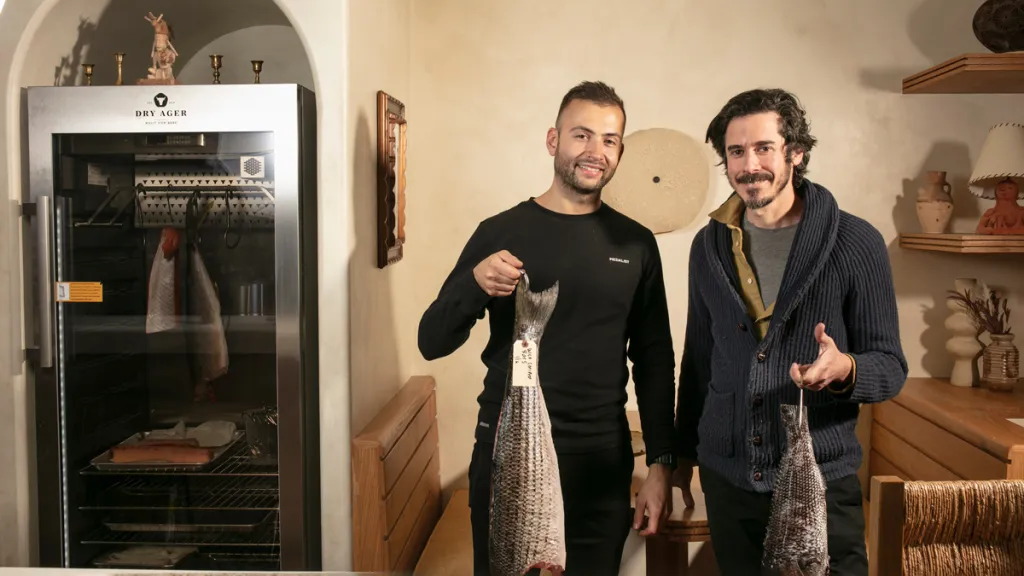
แม้จะมีความนิยมเพิ่มขึ้น แต่การ Dry Aging ต้องอาศัยการดูแลอย่างพิถีพิถัน และการเลือกสรรวัตถุดิบที่มีคุณภาพ เพื่อให้แน่ใจในเรื่องความปลอดภัยและคุณภาพของอาหาร เชฟอย่าง Niland เน้นย้ำถึงความสำคัญของการเลือกใช้ปลาคุณภาพสูง และการปฏิบัติตามขั้นตอนการจัดการอย่างถูกวิธี เพื่อให้ได้ผลลัพธ์ที่ดีที่สุด
เทคนิคนี้ยังคงพัฒนาอย่างต่อเนื่อง เหล่าเชฟต่างทดลองกับปลาทะเลหลายสายพันธุ์ ส่วนต่างๆ ของปลา และระยะเวลาการ Dry Aging ที่แตกต่างกัน ผลักดันขอบเขตของความคิดสร้างสรรค์ทางอาหาร แม้ว่าครั้งหนึ่งปลาแห้งอาจเป็นเพียงแนวคิดเฉพาะกลุ่ม แต่ปัจจุบันกลายเป็นเมนูหลักในหลายร้านอาหาร มอบประสบการณ์การรับประทานอาหารทะเลที่แปลกใหม่และมีรสชาติเข้มข้นให้กับลูกค้า
จากบทความโดย Caroline Hatchett
Josh Niland’s journey into the world of dry-aged fish began with a mistake during his early days as a line cook at Fish Face in Sydney. Forgetting to transfer uncooked portions of kingfish to the refrigerator, he discovered the fish dried out after being exposed to a fan overnight. Despite its altered appearance, Niland cooked the fish and was surprised by the result—a fish that inflated off the pan due to the dried-out skin.
This incident sparked Niland’s interest in intentional moisture loss in controlled environments, which eventually led to the development of his sustainable seafood restaurant group. Dry-aged fish, a technique he prefers to call intentional moisture loss, has since become a global phenomenon, revolutionizing how chefs approach seafood.
Traditionally, fish preservation methods such as pickling, smoking, and salting have been used to prevent decay and extend shelf life. However, these methods often alter the flavor and texture of the fish. Dry aging, on the other hand, preserves fish without compromising its quality, resulting in tender, flavorful, and umami-rich flesh.
By hanging scaled and gutted fish in a refrigerated room with controlled humidity and temperature, chefs can achieve intentional moisture loss, enhancing the fish’s texture and flavor. This technique not only extends the shelf life of fish but also reduces waste, making it appealing to sustainability-minded chefs and businesses.
Dry-aged fish has gained popularity among chefs worldwide, with restaurants incorporating it into various dishes, from crudos to sushi. Chefs like Tomer Blechman of Theodora in Brooklyn and Peter Hemsley of Aphotic in San Francisco have embraced dry aging as part of their commitment to sustainable sourcing and innovative cooking.
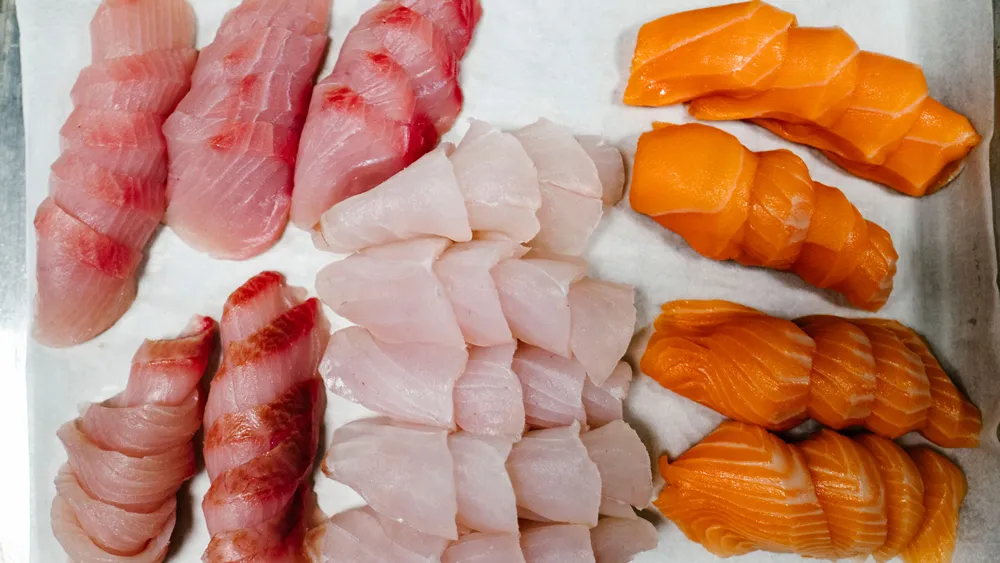
Despite its growing popularity, dry aging requires careful handling and proper sourcing to ensure food safety and quality. Chefs like Niland emphasize the importance of sourcing high-quality fish and following proper handling procedures to achieve the best results.
As the technique continues to evolve, chefs are experimenting with different species, cuts, and aging times, pushing the boundaries of culinary creativity. While dry-aged fish may have once been a niche concept, it has now become a staple in many restaurants, offering diners a unique and flavorful seafood experience.
From the article by Caroline Hatchett
